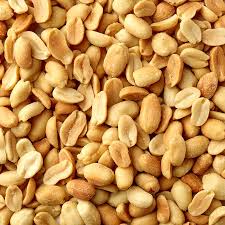Peanut Butter: Is It Good for You?

What Is Peanut Butter?
Peanut butter is a protein-rich spread made by grinding roasted peanuts into a thick, creamy paste. It’s popular around the globe and known for its rich taste and nutritional benefits.
“Beat the Pressure: A Comprehensive Guide to Lowering Blood Pressure Naturally.”
Buy book from Gumroad or Paystack
However, not all peanut butter is created equal. Many commercial varieties include added sugars, oils, and trans fats that can diminish its health value. For a healthier option, choose natural peanut butter with minimal ingredients—ideally just peanuts and a touch of salt.
You can also make peanut butter at home by blending roasted peanuts in a food processor until smooth or crunchy, depending on your preference.
The Origins of Peanut Butter
Peanut butter has ancient roots. The Incas and Aztecs ground peanuts into a paste long before modern manufacturing. Today’s peanut butter evolved thanks to several inventors:
- Marcellus Gilmore Edson patented peanut paste in 1884.
- Dr. John Harvey Kellogg (yes, the cereal pioneer) patented a version made from raw peanuts in 1895.
- Dr. Ambrose Straub invented a peanut butter-making machine in 1903.
Nutritional Profile of Peanut Butter
Two tablespoons (32g) of natural peanut butter typically contains:
- Calories: 190
- Protein: 8g
- Fat: 16g
- Carbohydrates: 7g
- Fiber: 3g
- Sugar: 1g
It’s also a good source of:
- Vitamin E
- Vitamin B6
- Niacin (B3)
- Magnesium
- Manganese
- Copper (supports bones, immune function, and blood vessels)
Is Peanut Butter Gluten-Free?
Yes—both peanuts and natural peanut butter are naturally gluten-free. Most store-bought peanut butters are safe for gluten-sensitive individuals, but always check the label for additives and possible cross-contamination, especially if you have celiac disease.
Is Peanut Butter Vegan?
Generally, yes. Peanut butter is plant-based. However, some varieties may include honey, which is not considered vegan, so be sure to review the ingredient list.
Types of Peanut Butter
- Natural Peanut Butter: Contains only peanuts (and sometimes salt). It’s lower in sugar and unhealthy fats.
- Creamy Peanut Butter: Smooth and easy to spread—ideal for dips, toast, and smoothies.
- Crunchy Peanut Butter: Includes bits of peanuts for a textured bite.
Shelf Life and Storage
Proper storage extends peanut butter’s freshness:
- Unopened jars: 6–9 months in the pantry
- Opened jars: 2–3 months in the pantry, then 6–9 months refrigerated
Keep it in a cool, dry place, away from direct light or heat.
Health Benefits of Peanut Butter
Peanut butter, when consumed in moderation, offers a variety of health benefits:
1. Heart Health
Rich in oleic acid, peanut butter can help maintain healthy cholesterol, blood pressure, and blood sugar levels. It also contains omega-6 fatty acids and arginine, both linked to better cardiovascular function.
2. Diabetes Prevention
Oleic acid and omega-6s may reduce insulin resistance, lowering the risk of type 2 diabetes.
3. Antioxidant Power
Peanut butter is loaded with antioxidants like vitamin E, B vitamins, coumaric acid, and resveratrol—all of which may reduce the risk of chronic diseases, including cancer.
4. Supports Weight Loss
Despite its high calorie count, peanut butter’s combination of healthy fats, protein, and fiber helps keep you full longer, reducing overeating and supporting weight management.
Risks of Peanut Butter
While nutritious, peanut butter has a few potential downsides:
- Peanut Allergy: For those allergic to peanuts, even a small amount can be dangerous.
- High in Calories: It’s calorie-dense, so portion control is essential.
- Fat Content: While it mostly contains healthy fats, there’s still some saturated fat, which should be limited.
- Mineral Imbalance: Peanuts are high in phosphorus, which can interfere with zinc and iron absorption.
How Peanut Butter Is Made
The commercial process includes:
- Roasting and shelling peanuts
- Removing skins and splitting kernels
- Grinding into a paste while heating to 170°F
- Cooling to 120°F
- Mixing in optional peanut chunks for crunchy texture
DIY Peanut Butter Recipe:
- 1 cup roasted peanuts
- 1½ tsp peanut oil
- ¼ tsp salt
Blend until smooth. For crunch, stir in chopped peanuts after blending.
Ingredient Standards
According to the FDA, peanut butter must contain at least 90% peanuts. Additives like artificial sweeteners, colors, and preservatives are not permitted in products labeled “peanut butter.” If oils are used, they should be hydrogenated vegetable oils.
Peanut Butter Alternatives
For those with allergies or seeking variety, other nut butters offer great nutritional value:
- Almond Butter: High in monounsaturated fats, calcium, and omega-3s.
- Macadamia Nut Butter: High in healthy fats, shown to support heart health.
- Walnut Butter: Packed with omega-3s and omega-6s, with fewer calories than peanuts.
Peanut Butter vs. Almond Butter
Both are nutritious, but almond butter has:
- More heart-healthy monounsaturated fats
- Less sugar
- More calcium
Flavor and texture vary, so choose based on taste and dietary needs.
What Is Powdered Peanut Butter?
PB2, or powdered peanut butter, is made by pressing peanuts to remove most oils, resulting in a lower-fat, lower-calorie product.
Benefits:
- May help prevent peanut allergies when introduced early in life
- Supports heart health
- A lower-calorie option for those monitoring intake
Just remember: more servings can still add up, so moderation is key.
Final Thoughts: Is Peanut Butter Good for You?
Yes—when enjoyed in moderation and in its natural form, peanut butter is a nutritious, satisfying food that supports heart health, stable blood sugar, and weight management. Just be mindful of portion size and added ingredients, and it can be a smart addition to most diets.
💔 “She said she loved me. And for fifty-two years, I believed her.” 💔
Buy The Book "The Longest Lie: A Husband’s Journey Through Love, Betrayal, and Redemption" From Gumroad






